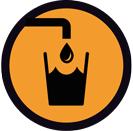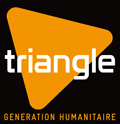AREA OF EXPERTISE

Water, hygiene and sanitation

AREA OF EXPERTISE

Water, hygiene and sanitation
FUNDING
The current situation in Darfur is the result of a conflict that has been ongoing since 2003. Although levels of violence have decreased since 2015, the needs remain high. This conflict has put 5.5 million people in urgent need of humanitarian assistance in Sudan, 3.1 million of whom are located in Darfur. Most of them have been displaced several times due to tribal conflicts, agropastoral conflicts or natural disasters. The Darfur area is a priority for the Sudanese Humanitarian Fund (SHF). In the WASH sector, priority is given to the implementation of activities related to the rehabilitation and/or improvement of water sources/systems, support to existing water systems, construction and rehabilitation of sanitation facilities and hygiene promotion. WASH activities are crucial while "communicable diseases remain a major cause of morbidity and mortality in Sudan" (Sudan Humanitarian Response Plan 2019) and measles, meningitis and diarrhoeal diseases are still frequently observed among the population. Cholera has also reappeared in some parts in the East of the country, particularly in the Blue Nile Region. As highlighted in the Sudan 2019 Humanitarian Response Plan (HRP), the spread of disease is fuelled, among other factors, by "limited access to safe drinking water and sanitation services, and poor hygiene conditions".
The context of Darfur, which can be described as a complex and chronic crisis, remains unstable and subject to unexpected developments and sudden events related to massive population movements, macroeconomic challenges and the consequences of climate change.
The programme targets areas affected by conflicts and by displacement or return movements in Western and Central Darfur. In 2019, the number of displaced persons is estimated at 183,725 in West Darfur and at 388,371 in Central Darfur, according to HRP figures. IDPs and returnees are the most vulnerable populations because of their uprooting and the low amount of property they have been able to take with them. The need for financial resources to meet the costs related to or induced by their displacement, combined with the loss of their property, has a lasting impact on the poverty level of these households (decapitalisation and loss of means of production for example). This precarious economic situation hampers access to appropriate services, particularly in rural areas or areas heavily dependent on humanitarian interventions. Improving access to WASH services in these areas, both in terms of quantity and quality, not only contributes to improving the health and living conditions of these populations but also tends to reduce tensions between host communities on the one hand, and displaced and returnees on the other hand, by reducing pressure on available resources.
The proposed action focuses on three areas:
Reducing dependence on external aid, building community capacity and ensuring accountability to affected populations are at the heart of TGH's actions.